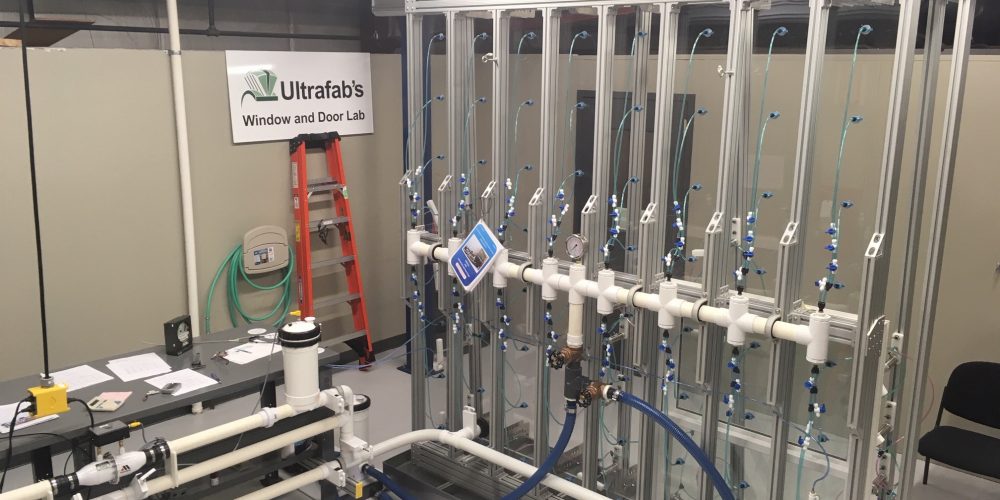Ultrafab Introduces New Test Wall
Return to Blog
In our constant quest for quality assurance, Ultrafab has recently added a state-of-the-art new test wall capability that performs air resistance testing and simulates wind-driven rain. The wall is made from corrosion-resistant aluminum, stainless steel, and polycarbonate, and it can be used to test air leakage and water penetration in a product.
The wall can test in accordance with widely accepted test standards including the following:
- ASTM E283 – Standard test method for determining rate of air leakage through exterior windows, curtain walls, and doors under specified pressure differences across the specimen
- ASTM E547 – Standard test method for water penetration of exterior windows, skylights, doors and curtain walls by cyclic static air pressure difference
- ASTM E331 – Standard test method for water penetration of exterior windows, skylights, doors and curtain walls by uniform static air pressure difference
With an aluminum conveyor roller system, the test station ensures that samples are safely and easily loaded and unloaded onto the test wall stage, which can accommodate samples up to 96” wide by 96” tall.
The wall’s unique gasket and pneumatic clamping system eliminates the need for wooden test frames, commonly referred to as wooden “bucks” in most cases. This helps to facilitate a much quicker test turnaround time, giving us the ability in most cases, to begin testing a product the same day as a pre-planned delivery.
The test station sits in a stainless steel water tank and uses a pump and filter to recirculate water to the spray nozzles. Spray nozzles are individually controlled and ensure complete coverage on test samples. During the test, water spray is contained between the test specimen and wall, maintaining a dry work area.
Because testing is entirely non-destructive, tested samples can be shipped back to the customer in their original condition without the ugly silicone mess or additional fastening screw holes once the test is complete.
In the long run, testing your products at this stage allows you to get the product to market faster, save money, and maximize your time.
Posted on January 29, 2020

